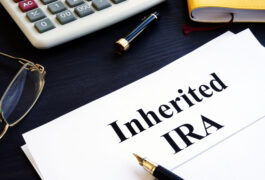Types of IRAs
Types of IRAs: A Beginner’s Guide
An Individual Retirement Account (IRA) is a powerful investment vehicle that offers significant tax advantages to help you save for retirement. There are several types of IRAs available, each with its own unique features, benefits, and eligibility requirements. Understanding the different types of IRAs is crucial in choosing the right account to align with your financial goals and circumstances. In this guide, we’ll explore the main types of IRAs:
1. Traditional IRA
A Traditional IRA allows you to make tax-deductible contributions, which can lower your taxable income for the year. Your investments grow tax-deferred, meaning you pay taxes only when you withdraw funds in retirement. Withdrawals in retirement are taxed as ordinary income.
2. Roth IRA
With a Roth IRA, you contribute after-tax dollars, so there’s no upfront tax deduction. However, your money grows tax-free, and you can make tax-free withdrawals in retirement, provided you meet certain conditions. Roth IRAs offer more flexibility, as you can withdraw your contributions at any time without penalty.
3. Self-Directed IRA
A Self-Directed IRA gives you more control over your investment choices. In addition to traditional assets like stocks and bonds, you can invest in alternative assets such as real estate, private equity, and precious metals like gold and silver. This allows for greater diversification and potentially higher returns.
4. SEP IRA
A Simplified Employee Pension (SEP) IRA is designed for self-employed individuals and small business owners. It allows employers to make tax-deductible contributions on behalf of their employees, including themselves. SEP IRAs have higher contribution limits compared to Traditional and Roth IRAs.
5. SIMPLE IRA
A Savings Incentive Match Plan for Employees (SIMPLE) IRA is a retirement plan for small businesses with 100 or fewer employees. Both employers and employees can contribute to SIMPLE IRAs, and employer contributions are tax-deductible. Like Traditional IRAs, contributions are made with pre-tax dollars, and withdrawals in retirement are taxed as ordinary income.
6. Spousal IRA
A Spousal IRA allows a working spouse to contribute to an IRA on behalf of a non-working or low-income spouse. This enables couples to maximize their retirement savings even if one spouse has little or no earned income. Spousal IRAs can be either Traditional or Roth, depending on eligibility and preference.
7. Inherited IRA
An Inherited IRA, also known as a Beneficiary IRA, is an account that is opened when an individual inherits an IRA or employer-sponsored retirement plan after the original owner’s death. Inherited IRAs are subject to specific rules regarding distributions and taxes, which vary depending on the beneficiary’s relationship to the original account holder.
Investing in a Gold IRA
One increasingly popular option is to invest in a Gold IRA, which allows you to hold physical precious metals like gold and silver within a Self-Directed IRA. Gold has long been considered a safe haven asset that can protect your wealth during economic uncertainty and inflation. By adding gold to your retirement portfolio, you can diversify your holdings and potentially mitigate risk.
When choosing the right type of IRA for your needs, consider factors such as your current and future tax bracket, investment preferences, and overall financial situation. It’s essential to consult with a financial professional who can guide you in making informed decisions that align with your long-term retirement goals.






